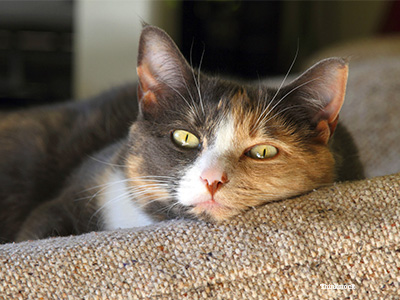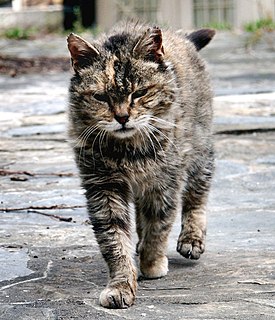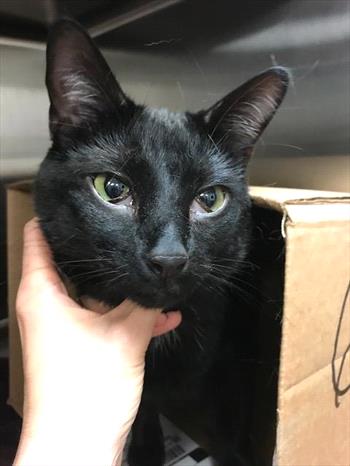mammary tumors in cats merck
Several reports have documented a strong association between the use of contraceptives and the development of benign or malignant mammary masses in cats. Cancer in general afflicts an estimated 30 percent to 40 percent of all cats and one-third or so of these malignancies involve the mammary glands.
Mammary cancer in cats is the third most common type cancer seen in this species.

. Mast cell tumors are a kind of tumor named for the type of skin cell from which they grow. They are prone to spread metastasize to the lungs and lymph nodes. Benign mammary tumors can become detrimental to the rats health only if they are.
A mammary tumor is a neoplasm originating in the mammary glandIt is a common finding in older female dogs and cats that are not spayed but they are found in other animals as wellThe mammary glands in dogs and cats are associated with their nipples and extend from the underside of the chest to the groin on both sides of the midline. There are many differences. There are also generalized blood cell splenic and digestive tract forms of mast cell sarcoma.
Benign tumors of the feline mammary gland. Tumors originating in these glands account for the third most common type of feline cancer after lymphoma and skin cancer. Cat mammary gland tumors are formed by an abnormal mass of cells in the mammary breast glands.
Mammary tumors are the third most common tumor in the cat after hematopoietic neoplasms and skin tumors Misdorp 2002. Feline mammary carcinomas represent the third most common type of feline cancer overall and the most frequently diagnosed feline cancer in cats older than 10 years of age. In cats the vast majority of mammary tumors are malignant.
These masses do not tend to be painful but can be associated with increased grooming behavior if discharge is present. A mammary fibroadenoma is a benign mammary gland tumor. The mammary glands in dogs and cats are associated with their nipples and extend from the underside of the chest to the groin on both sides of the midline.
Mammary gland tumors are most common in middle-aged and older female cats but they can occur in younger female cats as well as male cats. Females as well as males can develop this form of cancer. Feline mammary carcinoma is highly malignant and generally associated with a poor prognosis although studies suggest the range of survival times in affected cats is broad.
Cats spayed before 6 months or 12 months of age have a 91 or an 86 reduction respectively in the risk of mammary carcinoma development compared to intact cats. Mammary Cancer in Cats Explained. Hayes and Mooney 1985.
Approximately 90 of mammary tumors are malignant in cats and cats have fewer complex and mixed tumors than dogs. Mammary tumors in cats are most often seen in older average age 11 years nonspayed females. Mammary cancer is usually a malignant adenocarcinoma that appears in one or more of a cats breasts.
Sarcomas mucinous carcinomas duct papillomas adenosquamous carcinomas and adenomas are. Invasion ulceration lymphatic invasion and lymph node metastasis is common. Sarcoma SCC and mucinous carcinoma subtypes are less common.
A mammary tumor is a neoplasm originating in the mammary gland. It is a common finding in older female dogs and cats that are not spayed but they are found in other animals as well. More than a quarter of unspayed female dogs will develop a mammary tumor during their lifetime.
More than one tumor may be. This type of cancer is very aggressive and hard to treat as it spreads quickly. Cats spayed before 6 months of age have a 7-times reduced risk of developing mammary cancer and spaying at any age reduces the risk of mammary tumors by 40 to 60 in cats.
Approximately 90 of mammary tumors in cats are malignant cancerous. A mammary tumor develops as a result of abnormal replication of the cells that make up the breast tissue. The first sign of this type of cancer may be a fluid-filled or firm lump associated with the mammary gland or discharge originating from the nipple.
Feline Mammary Gland Tumors. Approximately 85 of feline mammary tumors are malignant and are histologically classified as adenocarcinomas. In cats however classification using this method has variable prognostic value.
Mixed mammary tumors and sarcomas are less commonly diagnosed than carcinomas. Mast cell tumors are the second most common skin tumor in cats. Other forms of breast and mammary cancer in a cat include adenomas duct papillomas and sarcomas.
The cause of mammary tumors is unknown however hormones play an important role in their development. There are several different types of. What causes mammary tumors in cats.
Mammary cancer is the third most common cancer of cats. The median age for MGT development in the cat is 10 years of age or older. Most feline mammary tumors are adenocarcinomas with tubular or papillary types more common than solid or mucoid types.
They can be benign noncancerous or malignant cancerous. Parity does not affect feline mammary carcinoma development. Approximately one in 4000 cats will develop this feline version of breast cancer and virtually all of those cats will be females and most will be middle-aged cats say 10 to 12 years of age.
Histologic grading of these tumors is achieved using the Elston and Ellis system originally developed for human breast cancer. Mammary tumors in cats are usually malignant 85-93 80 of feline mammary tumors are ADC with tubular papillary solid and cribriform subtypes most common. Mammary tumors develop because of spikes in female hormone estrogens that take place during a cats heat cycle.
Mammary tumors in cats are most common in older average 11 years intact females. Benign mammary tumors are fibrous noninvasive and movable when palpated. Mammary gland cancers in cats are similar to breast cancer in humans.
Siamese are a breed at higher risk and may develop this cancer at an earlier age than other cats. Mammary tumors can be benign non-cancerous or malignant cancerous. Cats have two chains or.
By spaying a cat at 6 months of age or before her first heat cycle it virtually eliminates the risk of getting mammary tumors. These two forms of the disease have different diagnostics treatments management and prognosis. Female cats generally develop mammary cancermalignant adenocarcinomaswhen they are about 10 to 14-years-old.
Almost all 99 of feline MGT occur in intact females Lana et al 2007. The risk of developing this cancer is twice as high in cats. A mammary breast tumor is a common tumor in cats.
Fortunately mammary fibroadenomas are more common than their malignant counterparts mammary adenocarcinomas. The risk is much lower for spayed female dogs male dogs and cats of either gender. Occurring more than 95 percent of the time in females it is the most frequently diagnosed type of feline cancer.

Pyometra In Cats Animal Hospital Cat Safety Cats

Download Pdf The Merck Veterinary Manual Free Epub Mobi Ebooks Veterinary Merck Hardcover Book

Small Animal Flashcards Quizlet
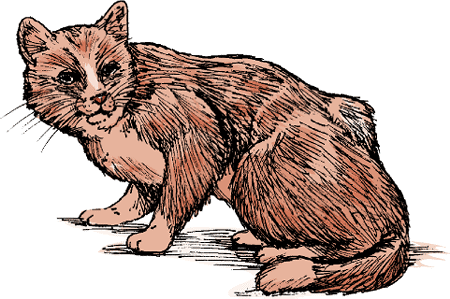
Tumors Of The Skin In Cats Cat Owners Msd Veterinary Manual

Feline Mammary Tumors Osu Veterinary Medical Center
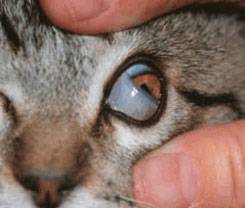
Cherry Eye In Dogs And Cats Veterinary Partner Vin

Mammary Hypertrophy In Cats Reproductive System Merck Veterinary Manual

Mammary Tumors Vis Medicatrix Naturae Veterinary Clinic Facebook

Pathological And Immunohistochemical Microscopy Of Natural Cases Of Canine And Feline Neoplastic Mammary Lesions Microscopy And Microanalysis Cambridge Core

Healthy Ears Cat Ear Infections Cat With Blue Eyes Crazy Cat People

Feline Mammary Hyperplasia Animal Health Topics School Of Veterinary Medicine

Hope For Cats With Mammary Tumors Cats Natural Pet Pancreatitis In Dogs

